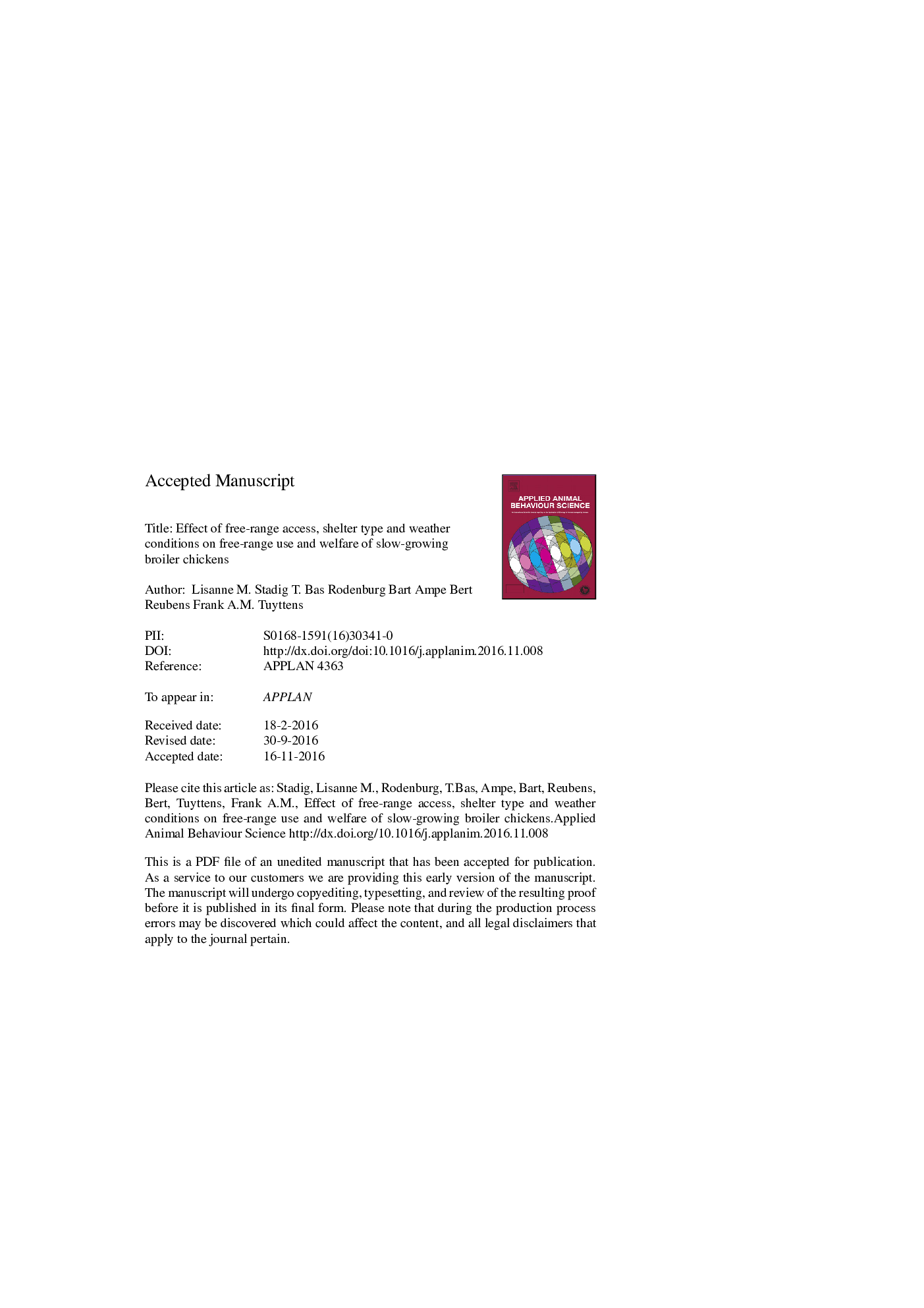| Article ID | Journal | Published Year | Pages | File Type |
|---|---|---|---|---|
| 5763287 | Applied Animal Behaviour Science | 2017 | 34 Pages |
Abstract
Mean percentage of birds using the free-range area was higher in SRC than in AS groups (42.8% vs. 35.1%; F1,7 = 1180.00, P < 0.001). The mean percentage of animals located further than 5 m from the house was 10.6 ± 1.1% of the chickens that were outside in the SRC groups vs. 4.1 ± 0.8% in the AS groups (F1,7 = 24.03, P = 0.002). The interactions of shelter type with rainfall (F2,5578 = 70.59, P < 0.001), increasing radiation (F2,5578 = 300.93, P < 0.001) and increasing wind speed (F2,5578 = 14.77, P < 0.001) showed that these factors were related with fewer chickens being outside; and that these effects were more pronounced in SRC than in AS chickens. An increasing temperature was related with more free-range use (F1,5578 = 32.24, P < 0.001). A shorter TI duration in week 3 (at group level) was associated with more chickens further than 5 m from the house (F1,250 = 13.79, P < 0.001). The percentage of animals needing more than one induction to induce TI in week 10 was higher for chickens from SRC (29.7%) than from IN groups (4.8%; t102 = â2.61, P = 0.028) but not AS (14.8%). Hock dermatitis occurred less in AS (7.6%) than in IN (40.1%; t222 = 3.15, P = 0.005) but not SRC (13.7%). These findings indicate that presence of SRC was most effective in encouraging chickens to use the free-range area, but that free-range access was only moderately related to better leg health and fearfulness (at group level).
Related Topics
Life Sciences
Agricultural and Biological Sciences
Animal Science and Zoology
Authors
Lisanne M. Stadig, T. Bas Rodenburg, Bart Ampe, Bert Reubens, Frank A.M. Tuyttens,
